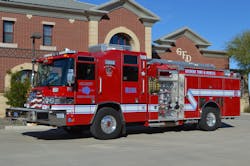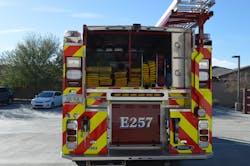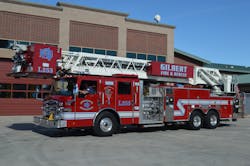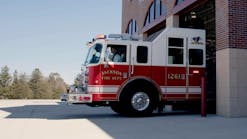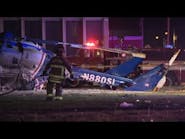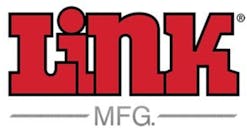During the past 20 months, fire departments across the country have had to adapt to extended delivery times and higher costs for new apparatus, both of which affected fleet replacement schedules. Based on recent bid proposal prices for new rigs and comments by fleet managers, these concerns won’t go away any time soon. Furthermore, for departments that have documented fleet replacement plans—supported by community and governmental financial resources—the effect of the past months’ cost increases clearly outpaced many organizations’ capability to fund new vehicle acquisitions.
For years, the standard terms of contract payment for new fire apparatus were for the authority having jurisdiction to pay for the completed vehicle when it’s delivered to the community. When financial conditions permitted, some departments took advantage of prepayment options, where some portion of the contract price was paid at contract, which provided a monetary discount to reduce the price of the apparatus. However, these payment scenarios only worked to everyone’s advantage when the delivery period from contract signing to final delivery was between 10–14 months. This enabled manufacturers to accurately assess their labor and material costs to build a custom apparatus, with some profit to support operations and warranty provisions.
Because of the effect of material component shortages, lack of experienced workers and an influx of new orders, delivery times for new vehicles now exceed two and a half years. Of course, it’s problematic, at best, to predict material costs beyond what suppliers can stand by for a specific time frame. The effect of all of these external forces resulted in prices for new vehicles that require manufacturers to estimate what their costs will be to build an apparatus at some point out in the future.
Departments that routinely acquired new engine and ladder apparatus each budget year have adapted their fleet replacement strategies. They have done this by pre-ordering rigs because of the extended delivery times and, to the extent possible, to minimize the effect of cost increases on the capital replacement budget. Moving forward, the age and condition of a department’s apparatus fleet largely will determine the capability to maintain fire/rescue services until new units can be placed into service.
Failing to keep pace
The Fire Department Safety Officers Association recently held the 2023 Fire Apparatus Specification, Maintenance and Fleet Management Conference, which was hosted at the Gilbert Public Safety Training Facility (GPSTF) in Arizona. The conference covered three days of fire apparatus-related topics for fire/rescue departments from across the United States and Canada.
Beyond the conference presentations, what was most impressive was the opportunity to meet with the GPSTF and members of the Gilbert Fire & Rescue Department (GFRD), including to discuss the department’s operations. Although new units were being placed into service on a regular basis, the department’s apparatus fleet wasn’t capable of keeping pace with increased demand.
The GFRD is under the leadership of Chief Rob Duggan, who is a 24-year veteran of the organization who oversees department operations from 11 fire stations. The department has 212 sworn personnel, 39 ambulance personnel and 28 professional civilian personnel. The department was awarded by the Insurance Services Office a Class 1 public protection classification and is an all-hazards agency that operates 11 engine companies, three ladder companies, six medic transport units and various support vehicles, including brush, hazmat, utility and water tender.Gilbert is located southeast of Phoenix and adjacent to Mesa and Chandler and covers approximately 68 square miles. The town has experienced rapid development, almost doubling its population to more than 200,000. Prior to 1993, fire protection was provided by Rural Metro Fire, which operated from two fire stations that staffed two engines and one 75-foot rear-mount aerial quint. Beginning in 1993, the GFRD was organized and began to plan for the future with the rapidly expanding community.
During 2022, the GFRD responded to 25,032 calls for service, with the busiest company being Engine 252, which is located in the northwestern portion of the community. Station 3 was the most active single station, with 3,578 responses during the year.
Each engine and truck is staffed with four personnel, including an officer, an engineer and two paramedic-level personnel.
Because of the rapid development and building expansion of both residential and commercial properties in the town, the department constructed eight new and replacement fire stations to provide adequate fire protection and maintain response levels.
The GFRD fleet’s inability to keep pace with increasing demand resulted in the department engaging Emergency Services Consulting International in April 2020 to conduct an assessment of the apparatus fleet services. (See “Apparatus Fleet Assessment” on page XX.)
The GFRD leadership, along with Lead Fire Mechanic John Felix, worked diligently to address and implement the recommendations that were made in the report, with support from the town manager, budget office and fleet division. This resulted in a number of success stories that affected and enhanced the GFRD apparatus fleet capabilities, with future plans for new apparatus acquisitions.
At the time of the report, the fire fleet, which is under the public works department, had only two full-time mechanics. Today, the fire fleet has five funded mechanic positions and is in the process of having personnel attain EVT certifications.
Beginning in 2020, the GFRD developed an intergovernmental agreement with a neighboring jurisdiction to provide after-hours support for repairs and out-of-service units. Today, the GFRD provides these services with fire fleet mechanics, with plans to have a specialized vehicle to perform these tasks.
The legacy maintenance software wasn’t fleet-specific. A new system that’s being implemented will track all of the desired information for use in analyzing fleet capabilities along with standard operating guidelines. The guidelines detail all aspects of the fire fleet operations based on institutional knowledge and the fleet maintenance best practices.Modernizing fleet replacement
One of the most significant recommendations from the fleet report to the GFRD was the need to update the department’s apparatus fleet replacement plan.
During the previous decade, no engine or ladder vehicles were acquired over eight years’ time. This affected both the frontline fleet and the reserve engine fleet, the latter of which was worn out and beyond its life cycle.
The GFRD’s apparatus committee comprises 12 personnel who represent company officers, engineers, fire fleet mechanics and line firefighters. Depending on the scope of the planned new acquisitions, the committee adapts by adding subject matter experts for the new vehicle.
During the past seven years, the department placed 10 engines, two 100-foot rear-mount platforms and one 107-foot rear-mount quint, with a planned frontline life cycle of 10 years followed by five years of reserve service. The department’s engine fleet has a standardized design, including enclosed bumper-mounted attack lines, low-mounted crosslay hosebeds, and tool and equipment layouts that are identical to all frontline units.
During 2022, the department placed four Pierce Quantum pumpers into service. They had several enhancements compared with the previous order, including a lower rear hosebed with enclosed storage for backboards and roof and trash hooks. The vehicles also are equipped with hydraulic ladder racks that carry a 16-foot roof ladder and two 28-foot extension ladders. The engines have a 210½-inch wheelbase and a 422-inch overall length.
The replacement date will be measured by several factors, including age, mileage, engine hours, vehicle reliability and municipal economic pressures.Several of the planned new engine replacements will be accelerated to improve the age and reliability of the reserve fleet.
The GFRD reserve fleet includes six engines, with plans to fully equip these vehicles to reduce the time that’s required to switch over from a frontline rig to a reserve apparatus.
In addition, the department has a new 100-foot rear-mount platform on order. It will enable a recently acquired 2021 model platform to go into reserve service for the three frontline ladder companies.
Evolution is possible
The GFRD, with support from the town manager, elected officials, residents and business owners, has done a remarkable job to address concerns to improve and enhance the department’s apparatus fleet, to provide a high level of fire rescue services to the community.
We appreciate the assistance of Chief Duggan for his assistance in the development of this article.
This article is part of the Apparatus Supplement 2023. The entire supplement can be found here.
Apparatus Fleet Assessment
When the Gilbert, AZ, Fire & Rescue Department hired a consultant to conduct an assessment of its apparatus fleet services, the resulting report generated six recommendations to enhance daily operations and the apparatus fleet:
· Develop and implement a strategic plan for fleet services for the next five years to include personnel and policies, space requirements, parts inventory needs and records management systems.
· Update the apparatus replacement schedule to ensure a reliable frontline and reserve apparatus fleet; reliability is related directly to the age of the apparatus in the system.
· Maintain an adequate mechanic-to-apparatus ratio to achieve shop and mechanic efficiencies and to permit EVT certification of mechanics.
· Research, procure and implement a more robust fleet asset management records system.
· Develop fleet standard operating procedures and guidelines.
· Develop and implement a 24/7 after-hours, on-call fire fleet support program.

Tom Shand
TOM SHAND, who is a Firehouse contributing editor, is a 36-year veteran of the fire service. He works with Michael Wilbur at Emergency Vehicle Response, consulting on a variety of fire apparatus and fire department master-planning issues. Shand is a member of the Firehouse Hall of Fame.
